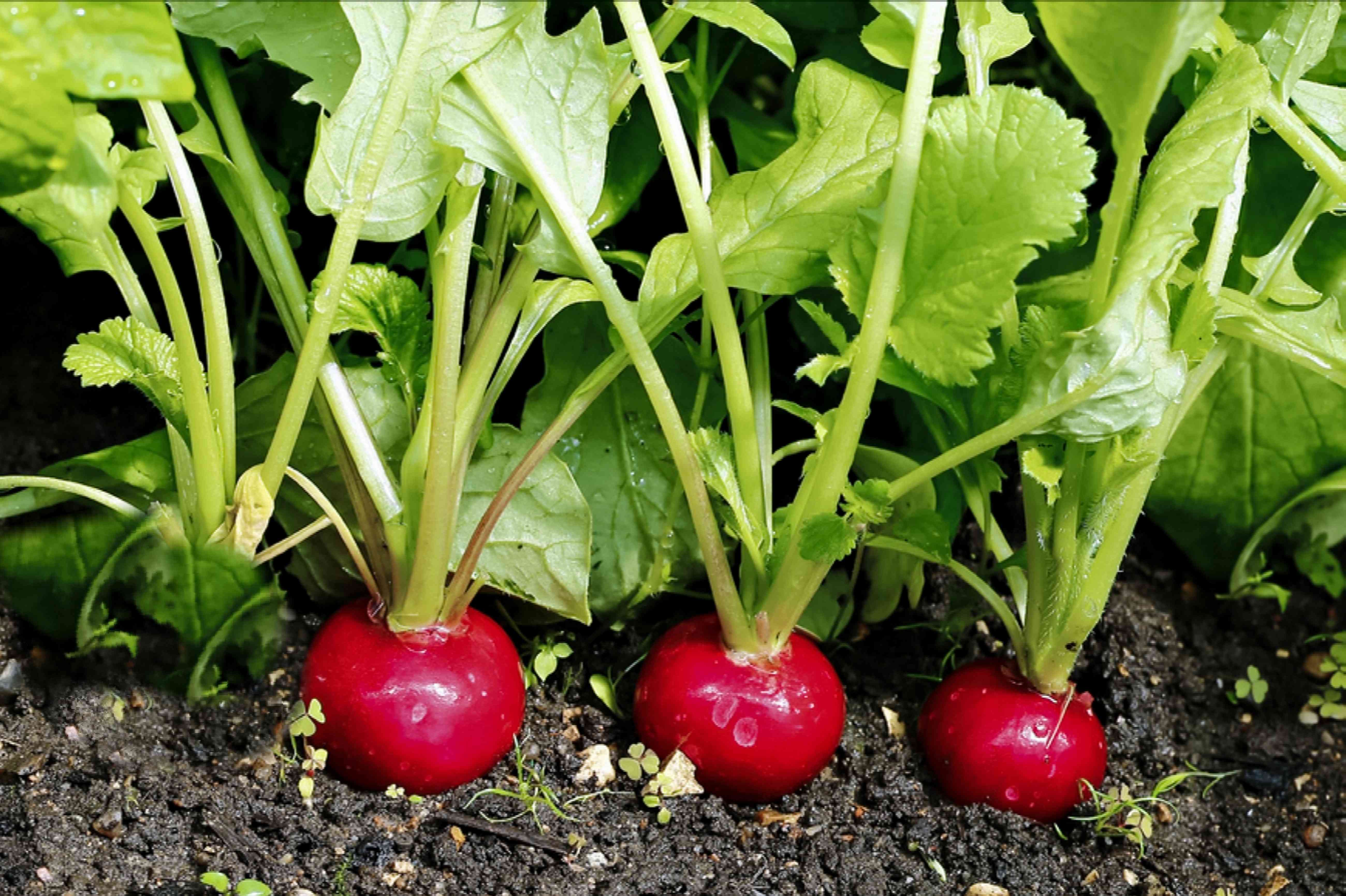
Radish
Raphanus sativus
Basic Information
🌿 Family: Brassicaceae🗺️ Zone: 2-11
Other Names:
- Daikon (Raphanus sativus var. longipinnatus)
- Horseradish Radish
🌡️ Ideal Temperature : 50°F – 75°F
🔥 Heat Tolerance: Up to 95°F
❄️ Cold Tolerance: Down to 20°F
🌱 Type: Annual
Layers
- Herbaceous
Functions
- Edible
- Dynamic Accumulator
- Pest Management
- Mulcher
- Erosion Control
Pests
Description
The Radish (Raphanus sativus) is a fast-growing root vegetable cultivated for its edible root and greens. It comes in a variety of colors, including red, white, purple, and black. Radishes thrive in cool weather and can be grown in early spring and fall. The plant produces small white, pink, or purple flowers that attract pollinators. It grows best in loose, well-draining soil rich in organic matter.
🌞💧 Sun and Water Requirements:
- Prefers full sun but tolerates partial shade.
- Requires well-drained, loose soil with consistent moisture.
- Avoid excessive nitrogen, which promotes leafy growth over root development.
✂️🫘 Methods to Propagate:
- Seeds: Direct sow seeds 1 cm (0.5 inches) deep, spaced 5 cm (2 inches) apart.
- Germinates within 3-7 days in optimal conditions.
- Thin seedlings to encourage healthy root development.
🧑🌾👩🌾 When to Harvest:
- Harvest radishes 3-6 weeks after planting, depending on the variety.
- Roots should be firm and crisp; over-mature radishes become woody and bitter.
Purpose
The Radish serves multiple functions in a permaculture system:
- Edible: The root is commonly eaten raw in salads or cooked; greens are also edible.
- Dynamic Accumulator: Absorbs nutrients like potassium and phosphorus, making them available to other plants.
- Pest Management: Repels squash bugs and cucumber beetles while deterring some soil pests.
- Mulcher: Radish greens can be chopped and used as mulch for soil improvement.
- Erosion Control: Fast-growing roots help stabilize soil in disturbed areas.